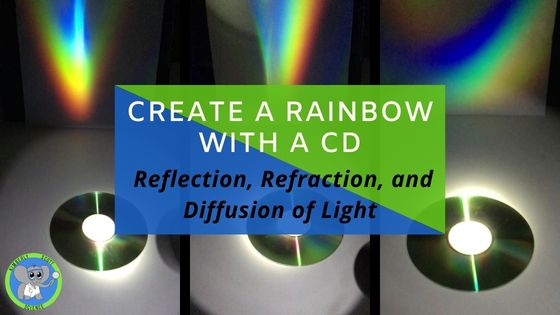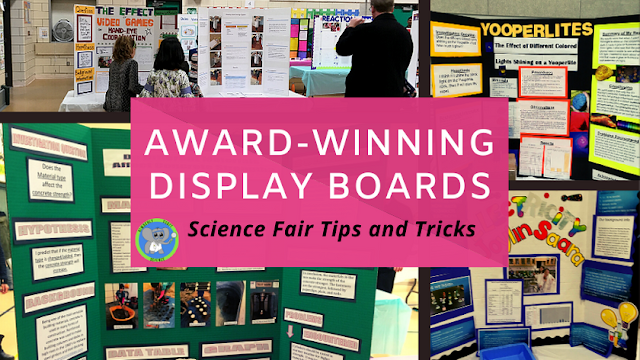Create A Rainbow Using A CD And Flashlight | Reflection, Refraction, And Diffusion of Light
Simple supplies and a big impact are what it is all about.
White light is all around us, but do students understand it is a mixture
of the visible light spectrum?
Try this fun activity with kids of all ages to learn the properties of light.
Supplies
Plain Compact Disk (CD), Flashlight, White Piece of Paper,
Darkened Room, A Room Darkening Box
My Procedures
1. Darken the room and use a room darkening box if needed.
2. Lay the plain shiny CD on a flat surface or on the bottom of the box.
3. Shine the flashlight onto the CD, so it reflects light onto the white paper in the box, a white wall, or a white piece of paper.
 |
| A room darkening box is made by taking a copy paper box and turning it vertically. Tape a piece of white paper to the back. It blocks more light to make the rainbow more visible. |
4. Move the CD further back from the white paper if you need to. Make sure you can see the light clearly. You can angle the CD to help reflect and disperse the colors.
5. Look closely at the light on the white paper. Count how many different colors of light you see.
The Science of the Demonstration
The CD reflects and separates into colors when the light shines on the
CD. The separation of visible light into its different colors is called
dispersion. Light reflects off objects, but not all things can disperse
light. A CD is unique because it has ridges and a mirror-like surface.
When the angle of light is just right, the light passes around these
edges and bends the light slightly. When the light reflects, the bending
will cause the colors to disperse in the order of their wavelength.
A plain shiny CD does not absorb any light. All the light reflects, and
you will see all the colors of the visible light spectrum. It will be a
rainbow of colors. The colors are usually very intense because of light
interference. This is when the light waves overlap. We introduce this
concept at the middle school level.
Have you ever seen a puddle with a rainbow of colors? The puddle has
a layer of oil on top. When the light hits the oil and water, it bends
slightly, just like the ridges of a CD. When the light reflects, it disperses
into a rainbow of colors.
We can expand this science demonstration to introduce the order of the
visible light spectrum. The colors of light will always be in the same
order from lowest to highest wavelength. Red, Orange, Yellow, Green,
Blue, Indigo, and Violet. We remember it as Roy G. Biv. He is not a
real person, but it sure helps us remember the order of a rainbow.
Expand Further
You can do so many things with this demonstration to teach about the
properties of light. What can we change and measure? We took it
further and changed the color of the CDs. We got amazing results.
Black will surprise you. It is a great way to teach how the eyes see
colors.
We even expanded it into a STEAM challenge. Students created
spinning tops, and the older grade levels made spectroscopes. This
enables the students to use their new knowledge of the properties of
light.











